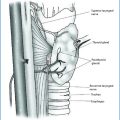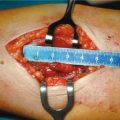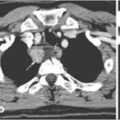© Springer-Verlag Italia 2016
Guido Gasparri, Nicola Palestini and Michele Camandona (eds.)Primary, Secondary and Tertiary HyperparathyroidismUpdates in Surgery10.1007/978-88-470-5758-6_33. Parathyroid Hormone Secretion and Action
(1)
Department of Medical Sciences, University of Turin, Turin, Italy
3.1 Action of Parathyroid Hormone
The parathyroid hormone (PTH) in physiological conditions is secreted into the circulation in response to low calcium levels and its principal activity is to regulate the concentration of calcium in the blood circulation, modulating movement of calcium into and out of the bone and reabsorption from renal tubules so as to maintain serum calcium concentration within a narrow range [1].
PTH acts by binding to and activating PTH receptors, which are G protein-coupled receptors with a seven transmembrane-spanning domain. The G-protein receptors activate multiple cellular signaling pathways – including cAMP, PLC, and PKC pathways – and the release of intracellular calcium stores. The PTH1 receptor (PTH1R) was the first receptor to be isolated, it is highly expressed in bone and kidney and it is also present, in a lower rate, in other tissues, such as skin, breast, heart, and pancreas; it can bind PTH and PTHrP (parathyroid hormone related peptide). The PTH2 receptor (PTH2R) is expressed in the lung, central nervous system, pancreas, leukocytes, gastrointestinal systems and other tissues; its functions are still not clear but it may be involved in the perception of pain, anxiety and affecting behavior. PTH2R is incapable of binding PTHrP. Further research has pointed to the presence of a new PTH receptor (C-PTH receptor), highly expressed in bone, with specificity for the carboxyl-terminal region of PTH, a portion of the hormone that is supposed to have hypocalcemic activity. The activated pathways of PTH1R lead to the “classical” effects of parathyroid hormone, which can be subdivided into skeletal and renal ones. A third indirect effect, increasing intestinal calcium absorption, is mediated by the increase in 1,25-dihydroxyvitamin D3 formation in the kidney [2].
In bone PTH acts directly through its abundant receptors on osteoblasts: here it has a variety of actions that are directly involved in promoting bone formation, osteoclast differentiation, osteoclastogenesis and development and ultimately increased bone resorption. Continuous PTH stimulates the release of calcium and phosphates by activating bone reabsorption, increasing osteoclast activity and number indirectly, since PTH receptors are expressed on osteoblasts but not on osteoclasts. PTH stimulation in osteoblasts leads to an increased expression of RANKL (receptor activator of nuclear factor xB lig-and) and inhibits expression of osteoprotegerin leading to osteoclastogenesis, thus resulting in bone reabsorption and an increase in serum calcium concentrations. While continuous PTH stimulation is catabolic to bone, intermittent administration can have an anabolic effect, stimulating osteoblast proliferation and differentiation and reducing osteoblast and osteocyte apoptosis. This characteristic is the basis of osteoporosis treatment with intact PTH and PTH 1-34 (teriparatide), which are administrated in an intermittent way.
In kidney, PTH stimulates calcium reabsorption in the distal nephron (more precisely, in the cortical thick ascending limb of the loop of Henle and in the distal convoluted tubule), where calcium is actively reabsorbed according to the needs of the organism. It is important to note that PTH has no effect on the proximal tubule, where calcium reabsorption depends passively by electrochemical gradients created by sodium and water. Thus, an increase in PTH secretion following a decrease in serum calcium will lead to an increased calcium reabsorption and to a decrease in calcium excretion, helping to restore normocalcemia. PTH acts on phosphate reabsorption too, inhibiting both proximal and distal reabsorption of phosphorus. This is mediated mostly by reducing the activity of the sodium-phosphate cotransporter in the tubules.
In the kidney, PTH also stimulates the conversion of 25-hydroxyvitamin D (25-OH-D, or calcidiol) to 1,25-dihydroxyvitamin D3 (1,25-(OH)2-D3, or calcitriol), its active metabolite by stimulating 1-α hydroxylase in the proximal tubule and decreasing the activity of 24-hydroxylase that inactivates calcitriol.
In gastrointestinal systems, PTH acts indirectly through its effects on the 1-hydroxylation of 25-OH-D to 1,25-(OH)2-D3, increasing the intestinal calcium absorption. Among the reported effects of PTH, there are also direct effect on vascular tone, enhanced hepatic gluconeogenesis, and enhanced lipolysis in isolated fat cells [3–5].
3.2 Parathyroid Hormone and Calcium Homeostasis
An adult human body usually contains 1–2 kg of calcium. The skeleton represents by far the main storage site, containing about 99% of total body calcium in the form of hydroxyapatite; the remaining 1% is contained in the extracellular fluid and soft tissues. In serum, calcium is present in three forms: 45% exists in the free (ionized) form, 45% is bound to serum proteins (mostly albumin) and 10% is complexed with carbonate, phosphate, or citrate ion. The protein-bound fraction is called the non-diffusible fraction, while the remaining 55% is termed the diffusible fraction. In adult subjects, total plasma calcium concentration is between 8.8 and 10.4 mg/dL (2.2 and 2.6 mmol/L). Extracellular calcium ions regulate numerous biological processes, including intracellular signaling for secretion of many hormones, muscle contraction, and the coagulation cascade, by stabilizing the voltage-gated ion channels on cellular membranes. Hypocalcemia causes increase in neuromuscular excitability, thus leading to tetany, bronchospasm, electrocardiographic alterations and seizures. Hypercalcemia can instead lead to fatigue, anorexia, nausea, vomiting, depression, stupor and even coma and cardiac arrest as high levels of plasma calcium decrease neuron membrane excitability. Other effects of long-term hypercal-cemia are renal or biliary stones and peptic ulcers. It is therefore important that serum ionized calcium concentrations be maintained within a very narrow range. Three organs contribute to regulating calcium concentrations, supplying calcium or removing it from blood when necessary [6].
In the small intestine, dietary calcium is absorbed via ion channels in the intestinal brush border membrane. Daily nutritional intake of calcium is about 0.6–0.8 g/day (15–20 mmol/day) for healthy adults in Europe and USA, but can increase up to 0.8–1.5 g/day (20-37 mmol/day) in some diets for the prevention and treatment of osteoporosis. Only 40–45% of calcium intake is absorbed in adults, but these fractions are greater in children, and in pregnant and nursing women. Intestinal calcium absorption is decreased in the elderly. Calcium is absorbed in the small intestine by two general mechanisms: an active transport process, located largely in the duodenum and upper jejunum; and a passive process that functions throughout the length of the intestine. The active transport is mediated by a vitamin D-dependent calcium-binding protein called calbindin. Calcium excretion in the intestine is almost constant and independent of calcium concentrations (about 100–200 mg/day).
Bone serves as a vast reservoir for calcium. Reabsorption of the bone leads to an increase in serum calcium and phosphate concentrations, while suppress ing reabsorption results in a net deposition of calcium in the bone. Under equilibrium conditions, about 500 mg/day (12 mmol/day) of calcium are both reabsorbed and deposited in the bone.
In kidney, almost all filtrated calcium is reabsorbed in the tubular system, thus preserving calcium levels. In healthy adults, about 6–10 g/day (150–220 mmol/day) of calcium are filtered through the nephron, but only 100–400 mg/day (2.5–10 mmol/day), i.e. only 1.6–4%, are excreted in urine. Tubular reabsorption is mainly located in the proximal convoluted tubule (60%), in the loop of Henle (25%) and in the distal tubule (15%). While calcium reabsorption in the proximal nephron is a passive, paracellular process, independent from hormones and drugs, in the distal nephron it is mainly an active process, regulated by PTH, 1,25-(OH)2-D3 and calcitonin.
A great part of this careful adjustment is achieved by the close interrelationship between serum ionized calcium and PTH secretion. Such a strict control means that a decrease in serum ionized calcium of as little as 0.1 mg/dL (0.025 mmol/L) results in a large increase in serum PTH concentration; conversely, an equally small increase in serum ionized calcium rapidly lowers the serum PTH concentration.
PTH response is rapid and occurs within minutes. Within seconds to minutes, there is exocytosis of PTH from secretory vesicles into the extracellular fluid. Then between minutes to an hour, intracellular degradation of PTH is reduced, and within a few hours stabilization of PTH mRNA leads to an increase in PTH gene expression. A slower response, taking some weeks, sees the proliferation of parathyroid cells [7].
Stay updated, free articles. Join our Telegram channel

Full access? Get Clinical Tree







